Power fishing for early season walleye
Category: article
Apr 20th, 2021 by Keith Worrall
Modified Apr 20th, 2021 at 9:54 AM
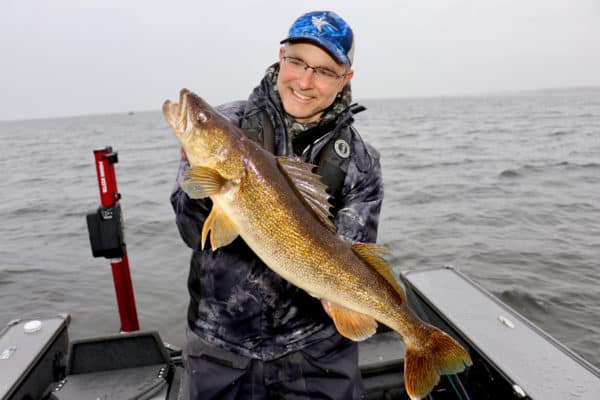
The cold-water period is prime time to power fish for walleye.
Power fishing for early season walleye
By Dr. Jason A. Halfen
For many anglers, walleye fishing is synonymous with finesse: long rods, light line and leader, small hooks and lively natural baits. There’s little doubt that a slow, methodical approach will put walleye in the boat or on the ice all season long. However, all anglers will benefit from recent trends in chasing walleyes that illustrate the benefits of power fishing techniques. These aggressive presentations are designed to elicit violent reaction strikes, rather than teasing ol’ marble-eyes into snacking on a lively leech or wiggly crawler. Productive lures for power walleye fishing include soft plastics, jigging minnow style baits – like the classic Rapala Jigging Rap or the Moonshine Lures Shiver Minnow – and lipless rattlebaits like the Rapala Rippin’ Rap. This lure in particular is a powerful weapon when chasing early season walleye, especially during the cold-water pre- and post-spawn periods. My favorite way to pursue these green and gold trophies adopts a three-step approach: hunt fish using Humminbird MEGA Side Imaging, position the boat for optimum casting angles using Minn Kota’s Spot Lock function, and then provoke aggressive strikes with Rippin’ Raps.
In many large walleye factories – especially the Great Lakes – walleye gather near the mouths of tributaries as the ice is breaking up in anticipation of their upcoming spawning run. After the spawn, these same fish filter back out of the rivers and then scatter across nearby shallow flats to recover and feed. Frequently, these flats may be expansive, extending for miles and providing post-spawn walleye with lots of room to spread out. As such, anglers are faced with a large amount of territory to cover as they work to locate active, catchable fish. Happily, we have access to a tool that allows us to rapidly cover vast tracts of water in a methodical way and find the fish swimming there: MEGA Side Imaging from Humminbird.
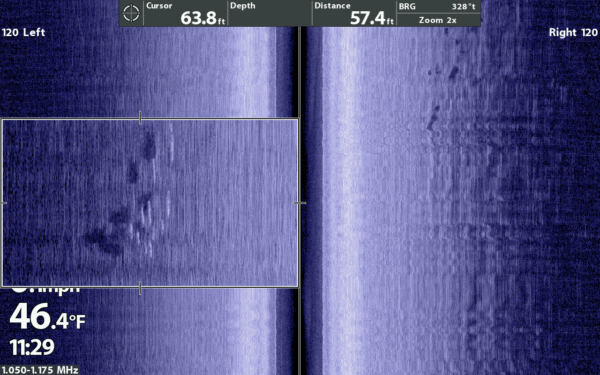
Humminbird MEGA Side Imaging is the perfect tool for locating schools of walleye.
Side Imaging is the preeminent search tool for locating structure and fish. Pioneered by Humminbird, Side Imaging directs a thin, high-frequency sonar beam to the sides of the boat, and provides easy-to-interpret, picture-like images of the bottom, structure and fish. Recent advancements brought a very high frequency, 1.2-Megahertz sonar beam to Side Imaging, providing an unprecedented level of detail and clarity in Side Imaging views. In the context of early-season walleye fishing, Side Imaging is primarily a fish-hunting, rather than structure-locating tool. Many shallow flats that harbor cold-water walleye have limited primary structure, like rockpiles, emerging weedbeds, or prominent breaklines to concentrate fish. As a result, these fish are always on the move, and MEGA Side Imaging provides the best possible way to locate schools of fish and stay with them as they meander across the flats. Anglers should look for bright white primary sonar returns with associated dark sonar shadows; the bright returns are the fish we’re hunting for, and the distance between the bright and dark spots reflects the distance that the fish is suspended off the bottom. Don’t stop and present baits to the first fish you find, because finding walleye as singles and pairs happens all the time; rather, wait until you have identified a large concentration of fish, and can take advantage of the competitive feeding behavior that arises when many hungry predators are concentrated into one area. Drop a waypoint on large pods of fish, and then quickly cycle back and prepare for battle.
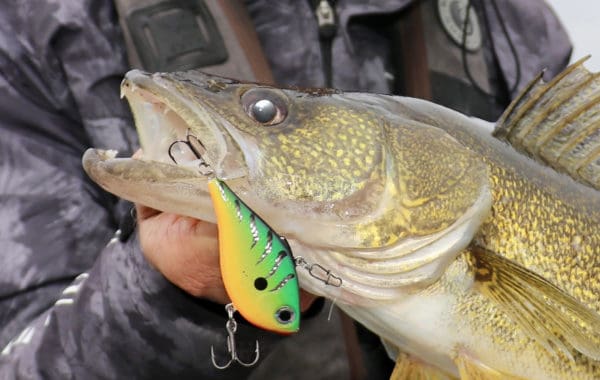
A #7 Rapala Rippin’ Rap elicits aggressive reaction strikes from cold-water walleye.
In my experience, the best way to present baits to cold-water walleye is from a (very) slowly drifting boat or from a stationary position; of these two options, I prefer to be locked into one place in close proximity to the waypoints I drop on schools of fish. I position my boat adjacent to the waypoint – far enough away to avoid spooking these fish in cold, crystal-clear water, yet near enough to reach beyond the waypoint with a long cast. The boat’s position is maintained with GPS precision thanks to the Spot Lock function, built into the i-Pilot Link feature of my Minn Kota Ultrex. In light or moderate wind, I will Spot Lock alongside the waypoint, and present baits out the sides of the boat. Keeping the fish off to my left or right allows me to monitor the target zone with Side Imaging while Spot Locked in place; if I no longer see fish returns and sonar shadows, it’s time to reposition the boat or restart the hunt. Conveniently, the i-Pilot Link’s Jog feature allows me to move the boat in precise, five-foot increments to stay on top of the school. In stronger winds that would lead to a significant amount of line bow and loss of lure control, I will Spot Lock directly upwind of the waypoint and Jog around as necessary to keep the bites rolling in.

A medium or medium-heavy power rod with fast or extra-fast action is ideal; an excellent choice is the G. Loomis E6X 853S JWR.
With the boat locked in place, it’s time to get those fish fired up with Rippin’ Raps. Larger profile baits in the #6 and #7 sizes are appropriate for Great Lakes fish, where the average forage is larger than you might find on smaller, inland bodies of water. Perch patterns are productive, as are gold and purple. Use a cross-lock snap to attach the lure to a fluorocarbon leader. I use a three-foot leader of 15 lb test fluorocarbon which provides a measure of abrasion resistance when fishing on and near the bottom in zebra mussel-infested waters. Connect the leader to a braided main line using a Double Uni or FG knot; I use 20 lb. test PowerPro in the Hi-Vis Yellow color pattern so I can watch the line during the retrieve.
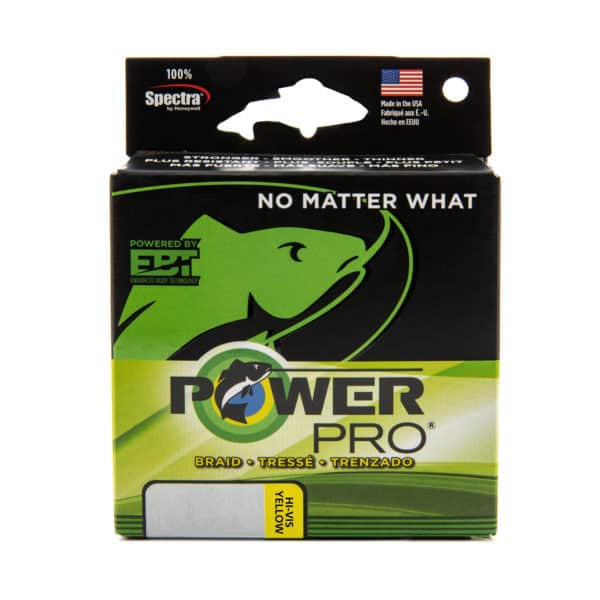
I use 20 lb. test PowerPro in the Hi-Vis Yellow color pattern so I can watch the line during the retrieve.
A medium or medium-heavy power rod with fast or extra-fast action is ideal; an excellent choice is the G. Loomis E6X 853S JWR, a 7’1” spinning rod with medium-heavy power and extra-fast action. Rig the rod with a 3000-series spinning reel, like the Shimano Vanford VFC3000XGF, with a smooth drag and powerful winding to overpower big, angry walleyes.
The 3000-series Shimano Vanford VFC3000XGF with a smooth drag and powerful winding overpowers big, angry walleyes.
The basic Rippin’ Rap presentation begins with a long cast; walleye spook easily in cold, clear water, so keeping the boat away from the fish is paramount. Close the bail and come tight to the bait, and then quickly pop it off the bottom by snapping the rod tip from the 10:00 to the 11:00 position. Pick up slack line as the bait pendulums to the bottom while dropping the rod tip to 10:00. Pause briefly with the lure on the bottom before snapping again. Fish will either hit as the Rippin’ Rap falls or attack it as it rests on the bottom. You’ll feel some of the bites as they happen, but you’ll also encounter numerous occasions when your next snap of the lure is met with the weight of a heavy fish that has pounced on the lure as it rests on the sand. Be ready for that possibility, and train yourself to set the hook immediately if you notice any sort of resistance or extra weight at the start of the next snap.
Power fishing for walleye doesn’t end with the post-spawn period. In fact, lipless rattlebaits, soft plastics, and jigging minnow-style baits are effective all season long. Add an aggressive presentation or two to your repertoire this season and enjoy the eye-popping results.
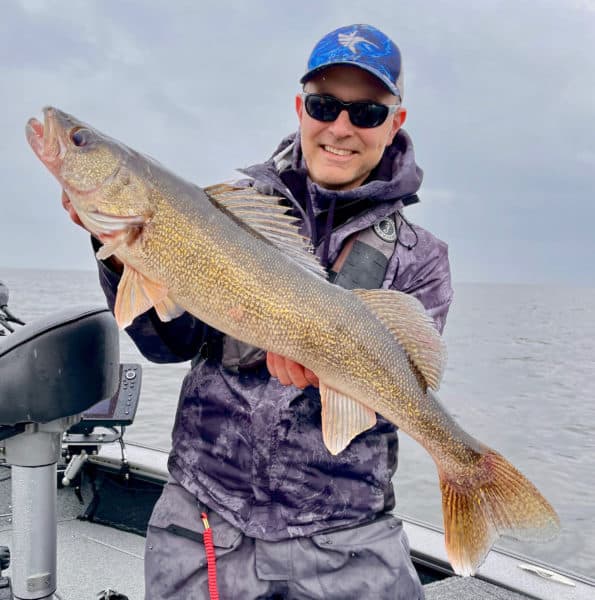
Power fishing for walleye pays big dividends throughout the season.
Dr. Jason Halfen is a long-time guide, tournament angler, and specialist in marine electronics. He owns and operates The Technological Angler, dedicated to teaching anglers to leverage hi-tech tools to find and catch more fish. Learn more by visiting www.technologicalangler.com.
